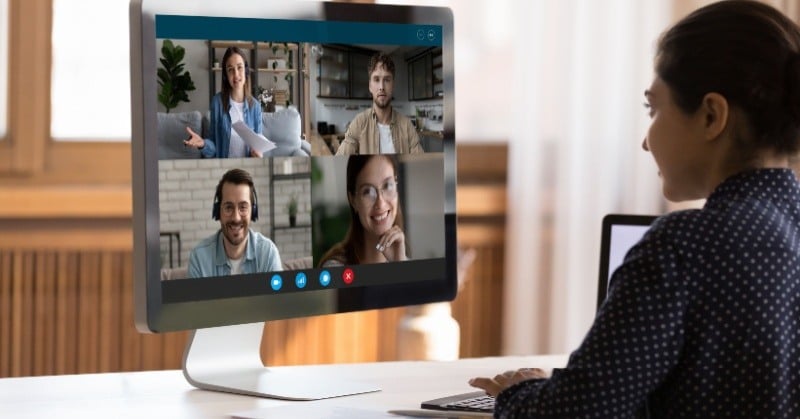Despite more companies calling on employees to return to the office, remote jobs will remain a significant part of the workforce. After all, it is not easy for folks who settled somewhere far from their company headquarters during COVID or were hired as remote workers in the first place to just up and move.
That means you will need effective remote training to ensure the professional development of employees that you only see online.
Last week, we covered the tools, model and preparation required for this kind of training. This week, we will focus on making that training interactive, optimizing a schedule for it, and facilitating all this knowledge to your team.
Make it interactive
Team member engagement could be considered the most challenging piece to solve, regardless of whether the training is in-person or virtual.
Start by encouraging interaction during the training. Have team members introduce themselves, use a cheesy icebreaker or conversation starter, and encourage them to use the chat function or the space for comments on your platform.
Include breakout sessions, group discussions, role-playing, and other group activities to encourage collaboration and team building, while fostering more in-depth learning.
Bring in case studies to help prompt problem solving and allow them to put their analytical skills to use. Having only slides to look at can become mundane and boring. Using carefully chosen support videos, infographics, audios and gamification will help support varied learning styles and further foster engagement.
Schedule accordingly
After you have created all of your content, you will need to schedule your training. Is this a one-day workshop, or a quick 30-minute review, or a two-week onboarding training?
Make sure you allow enough time for the team not only to review the content but have time during the sessions for participation in activities and discussions. It is so much fun to sit in front of our computer screens with one virtual call after another—said no one ever.
Design your schedule with plenty of breaks and a mix of different activities mentioned earlier. Encourage your attendees to walk away from their screens during the breaks.
Another thing to be mindful of is time zones. Remote teams mean the potential of having individuals in several time zones at once, so you may need to adjust start and finish times for live events.
Facilitation
Whether you are facilitating live or recording, make sure you have tested all the capabilities of the tools that will be used during the session. Test your microphone, webcam, and how your visuals are viewed.
Imagine how annoying it would be to log on, start training, and then you need to update mid-session. Little things like this can de-rail the learning process, so test often.
Ensure everyone is familiar with the tools you are using. Technical issues are frustrating when you are trying to facilitate, so have team members install or logged into the needed software before training starts.
This also means making sure that everyone attending has been given access to what they need. When you send out the technology or login requirements, include the agenda and set expectations. Depending on your audience, this does not always need to be a detailed breakdown, so tailor accordingly. If you decide they need to come prepared with something, make sure that is clearly outlined.
Choose the right location to record or facilitate as well. While we are all forgiving of the occasional pet or child cameos when you are recording or facilitating, try to find a place to minimize those distractions. Your environment should have the tools and space to be effective—including stable internet service.
Don't forget to brush up on your public speaking skills either. Just because you are recording or teaching online, does not mean they are less important.
If you are recording, practice your session several times before you submit a final file. You can also record your practice of live facilitation. Recording gives you a chance not only to test the tools but also to see how the team will experience it. Both allow you to garner feedback on areas to improve or adjust.
Most of all, be present. Do not fall into the thought process that sitting in front of a laptop means you do not need to worry about personal presentation. Helpful tip: If you have the setup for it, stand while you present for a recording or live session.
Gather feedback
Encourage honest and real feedback from those that participated in your training. This is the best way to learn where to improve and develop more effective materials.
Everything they have to say about the subject matter, visuals, facilitation and overall experience matters. You can send anonymous surveys, or host a round table discussion, whatever method you feel confident will give you the information you need.
Remote training is no longer a thing that will happen down the line. It is here, now. It will take time, preparation, and maybe even a few fails to find that sweet spot of engaged learning, so do not rush the process. Take these tips and use this as an opportunity to up your training game.
.png?width=150&height=63&name=TWRlogo-regmark_blueblack%20(1).png)
.png)










Do you have questions about this article? Email us and let us know > info@woodard.com
Comments: